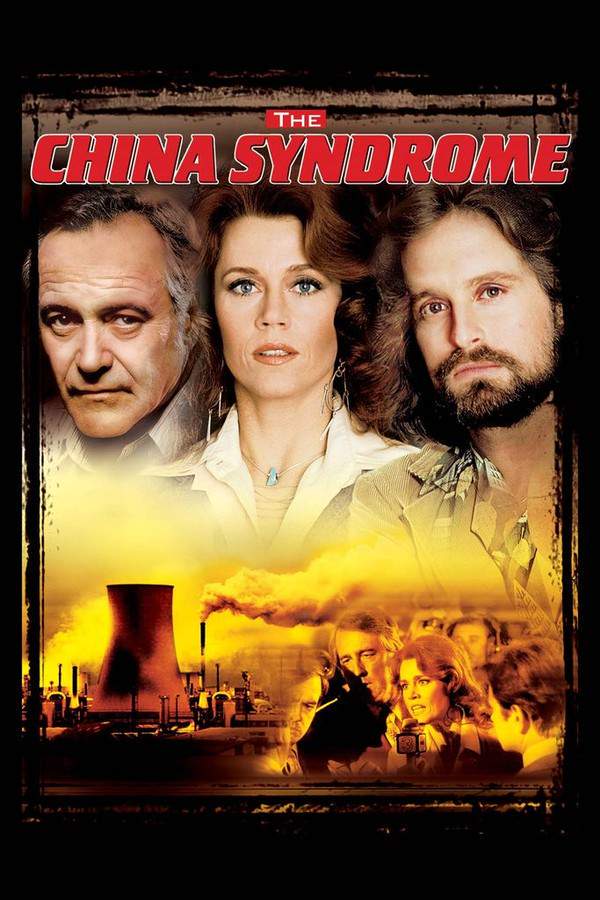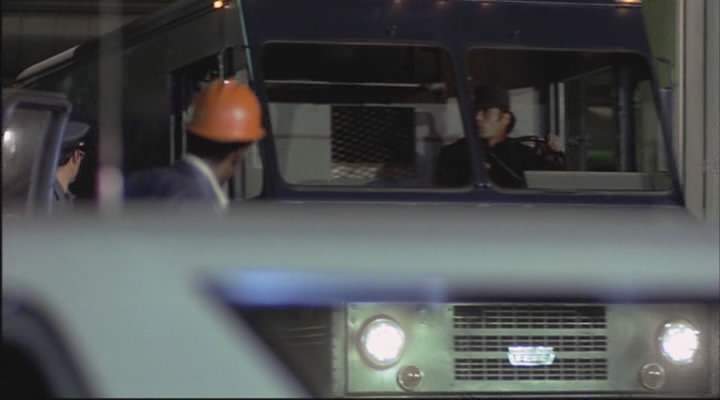The China Syndrome 1979

A television reporter and her cameraman witness an emergency shutdown at a nuclear power plant, unknowingly averting a potential disaster. As they investigate, a plant supervisor uncovers alarming safety violations and a disturbing cover-up. Risking her career and personal safety, she fights to expose the facility's negligence and prevent a catastrophic meltdown with widespread repercussions.
Does The China Syndrome have end credit scenes?
No!
The China Syndrome does not have end credit scenes. You can leave when the credits roll.
Meet the Full Cast and Actors of The China Syndrome
Explore the complete cast of The China Syndrome, including both lead and supporting actors. Learn who plays each character, discover their past roles and achievements, and find out what makes this ensemble cast stand out in the world of film and television.
External Links and Streaming Options
Discover where to watch The China Syndrome online, including streaming platforms, rental options, and official sources. Compare reviews, ratings, and in-depth movie information across sites like IMDb, TMDb, Wikipedia or Rotten Tomatoes.
Ratings and Reviews for The China Syndrome
See how The China Syndrome is rated across major platforms like IMDb, Metacritic, and TMDb. Compare audience scores and critic reviews to understand where The China Syndrome stands among top-rated movies in its genre.

81
Metascore
7.2
User Score


%
TOMATOMETER

0%
User Score

7.4 /10
IMDb Rating
Take the Ultimate The China Syndrome Movie Quiz
Challenge your knowledge of The China Syndrome with this fun and interactive movie quiz. Test yourself on key plot points, iconic characters, hidden details, and memorable moments to see how well you really know the film.
The China Syndrome Quiz: Test your knowledge on the 1979 film 'The China Syndrome,' which delves into the precarious world of nuclear energy and the pursuit of truth.
Who plays the role of the ambitious TV news reporter, Kimberly Wells?
Jane Fonda
Meryl Streep
Glenn Close
Diane Keaton
Show hint
Awards & Nominations for The China Syndrome
Discover all the awards and nominations received by The China Syndrome, from Oscars to film festival honors. Learn how The China Syndrome and its cast and crew have been recognized by critics and the industry alike.
The 52nd Academy Awards 1980


Art Direction
Writing (Screenplay Written Directly for the Screen)
33rd British Academy Film Awards 1980



Best Screenplay
32nd Directors Guild of America Awards 1980

37th Golden Globe Awards 1980
Best Motion Picture – Drama




Full Plot Summary and Ending Explained for The China Syndrome
Read the complete plot summary of The China Syndrome, including all major events, twists, and the full ending explained in detail. Explore key characters, themes, hidden meanings, and everything you need to understand the story from beginning to end.
TV news reporter Kimberly Wells (Jane Fonda) and her freelance cameraman Richard Adams (Michael Douglas) embark on an investigative journey at the Ventana Nuclear Power Plant, situated near Los Angeles, as part of a series of reports focusing on energy production. Driven by her aspirations of becoming a hard-hitting journalist, Kimberly finds herself increasingly frustrated by the barriers imposed by her superiors, who seem to underestimate her potential due to her gender and perceived inexperience. As a result, she is relegated to covering less significant local stories, lacking any real substance.
While they observe from a designated area, accompanied by the plant’s public relations officer Bill Gibson, an unexpected incident occurs—the plant undergoes a reactor “SCRAM,” a temporary shutdown affecting operations. Initially, Jack Godell (Jack Lemmon), the shift supervisor at Ventana, believes the SCRAM to be a normal procedure. It soon becomes clear, however, that something is amiss when he detects unusual vibrations and notices the water level in the reactor core rising alarmingly. The crew, including foreman Ted Spindler (Wilford Brimley), frantically tries to rectify the situation by opening relief valves, yet the readings indicate an impending disaster as water levels dangerously dip close to exposing the reactor core.
Amid the chaos, Richard discreetly captures the unfolding incident on camera, as the guests in the observation gallery can only infer the crew’s escalating panic from their visual cues. Upon returning to the television station, they are brimming with excitement over the illegally obtained footage. However, the news director Don Jacovich (Peter Donat) informs them that federal law prohibits airing the footage, prioritizing the company’s legal safety over their journalistic ambitions. His ruling leaves Kimberly and Richard frustrated, especially as Jacovich expresses corporate concerns regarding potential criminal charges.
Days later, after a fierce argument over Ventana’s misleading terminology stating the near-meltdown as an “unanticipated transient,” Richard’s belief that significant truths are being concealed leads him to steal the film from the station vault. Meanwhile, an official Nuclear Regulatory Commission (NRC) investigation is underway, interviewing the Ventana employees present during the SCRAM. Although they are exonerated, Kimberly suspects deeper issues are at play. She confronts Jack at a bar where plant employees gather, who insists, despite her probing questions, that the plant is safe.
Jack’s own investigation reveals shocking evidence—a leak of nuclear material and improper inspections regarding the plant’s water pumps. Despite his mounting fears, he faces pressure from his supervisor Herman as the facility’s owners prioritize profit over safety. When another SCRAM is imminent, Jack fears the catastrophic fallout that could result from a nuclear meltdown, aptly termed the “China Syndrome,” where molten nuclear material breaches containment, with disastrous effects.
In a desperate attempt for justice, Kimberly locates Richard at a nuclear science convention, discovering he has been showcasing their footage to experts. The scientists assert that the plant narrowly avoided a catastrophic failure that could have had considerable consequences for Southern California. Realizing the gravity of their situation, they approach Jack again, imploring him to come forward with the truth about Ventana’s safety failures.
As Richard attempts to get Jack to the convention where the incriminating evidence can be showcased, threats from the contracting firm’s security grow dire. In a turn of events, Jack becomes involved in a standoff within the control room, brandishing a gun and demanding a live interview with Kimberly to reveal the plant’s precarious safety conditions. As tensions rise, the facility is engineered to induce another SCRAM to distract Jack and regain control of the power levels.
During the live interview, confusion ensues as a SWAT team intervenes, leading to a tragic confrontation that leaves Jack injured and, eventually, killed amidst a series of catastrophic events occurring within the plant. Finally, as chaos envelops the facility, Kimberly’s emotional distress becomes palpable. She stands before a crowd of reporters, challenging the mugging narrative pushed by the plant’s spokesperson, striving to unveil the truth behind Jack’s drastic actions and his heroism in the face of dire consequences. As her broadcast culminates in heartfelt tributes to Jack, she knows this is only the beginning of a far-reaching investigation into the nuclear safety issues plaguing the Ventana facility.
Uncover the Details: Timeline, Characters, Themes, and Beyond!

Coming soon on iOS and Android
The Plot Explained Mobile App
From blockbusters to hidden gems — dive into movie stories anytime, anywhere. Save your favorites, discover plots faster, and never miss a twist again.
Sign up to be the first to know when we launch. Your email stays private — always.
Watch Trailers, Clips & Behind-the-Scenes for The China Syndrome
Watch official trailers, exclusive clips, cast interviews, and behind-the-scenes footage from The China Syndrome. Dive deeper into the making of the film, its standout moments, and key production insights.
Cars Featured in The China Syndrome
Explore all cars featured in The China Syndrome, including their makes, models, scenes they appear in, and their significance to the plot. A must-read for car enthusiasts and movie buffs alike.
The China Syndrome Themes and Keywords
Discover the central themes, ideas, and keywords that define the movie’s story, tone, and message. Analyze the film’s deeper meanings, genre influences, and recurring concepts.
The China Syndrome Other Names and Titles
Explore the various alternative titles, translations, and other names used for The China Syndrome across different regions and languages. Understand how the film is marketed and recognized worldwide.
Similar Movies To The China Syndrome You Should Know About
Browse a curated list of movies similar in genre, tone, characters, or story structure. Discover new titles like the one you're watching, perfect for fans of related plots, vibes, or cinematic styles.
Quick Links: Summary, Cast, Ratings, More

What's After the Movie?
Not sure whether to stay after the credits? Find out!
Explore Our Movie Platform
New Movie Releases (2026)
Famous Movie Actors
Top Film Production Studios
Movie Plot Summaries & Endings
Major Movie Awards & Winners
Best Concert Films & Music Documentaries
Movie Collections and Curated Lists
© 2026 What's After the Movie. All rights reserved.















































